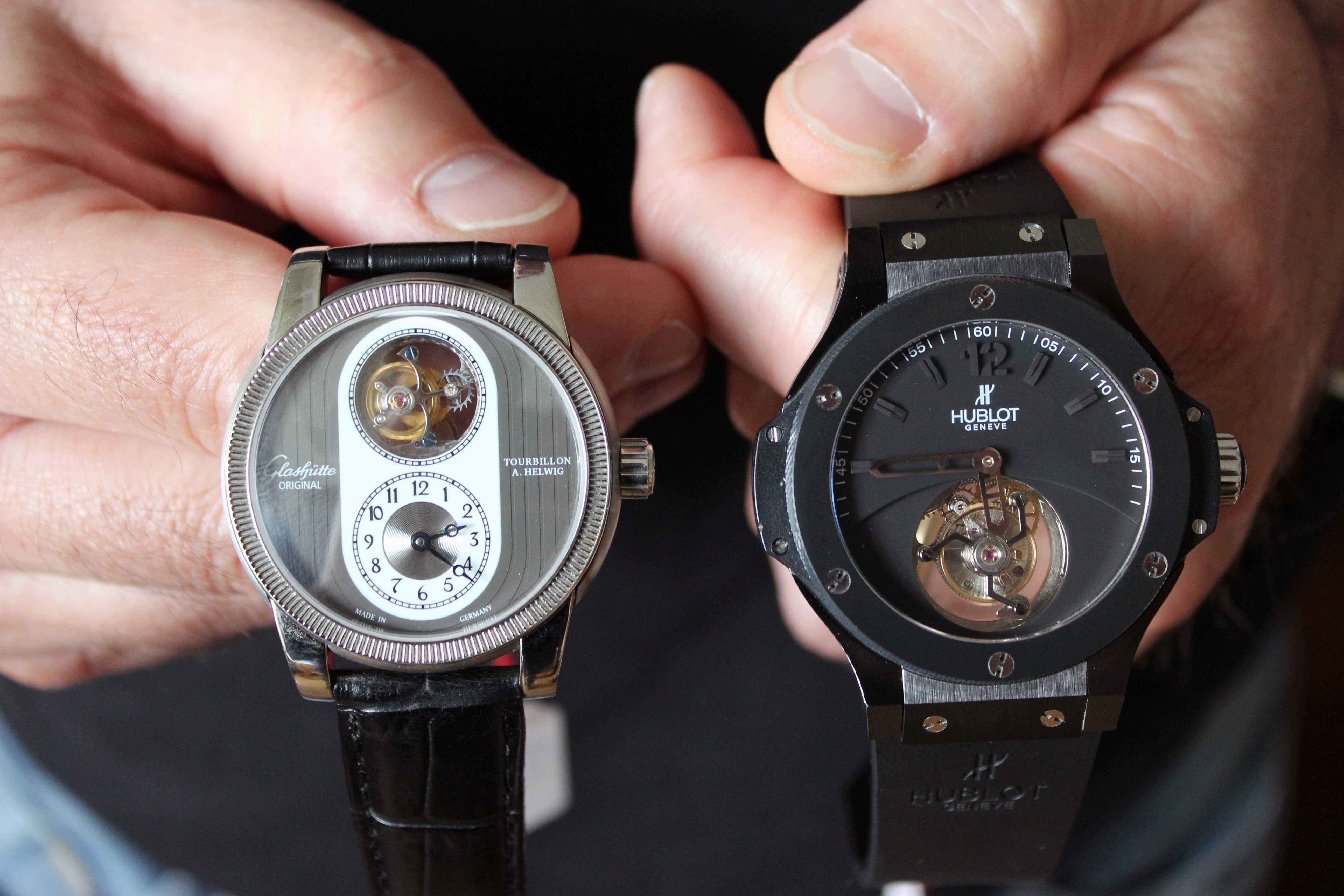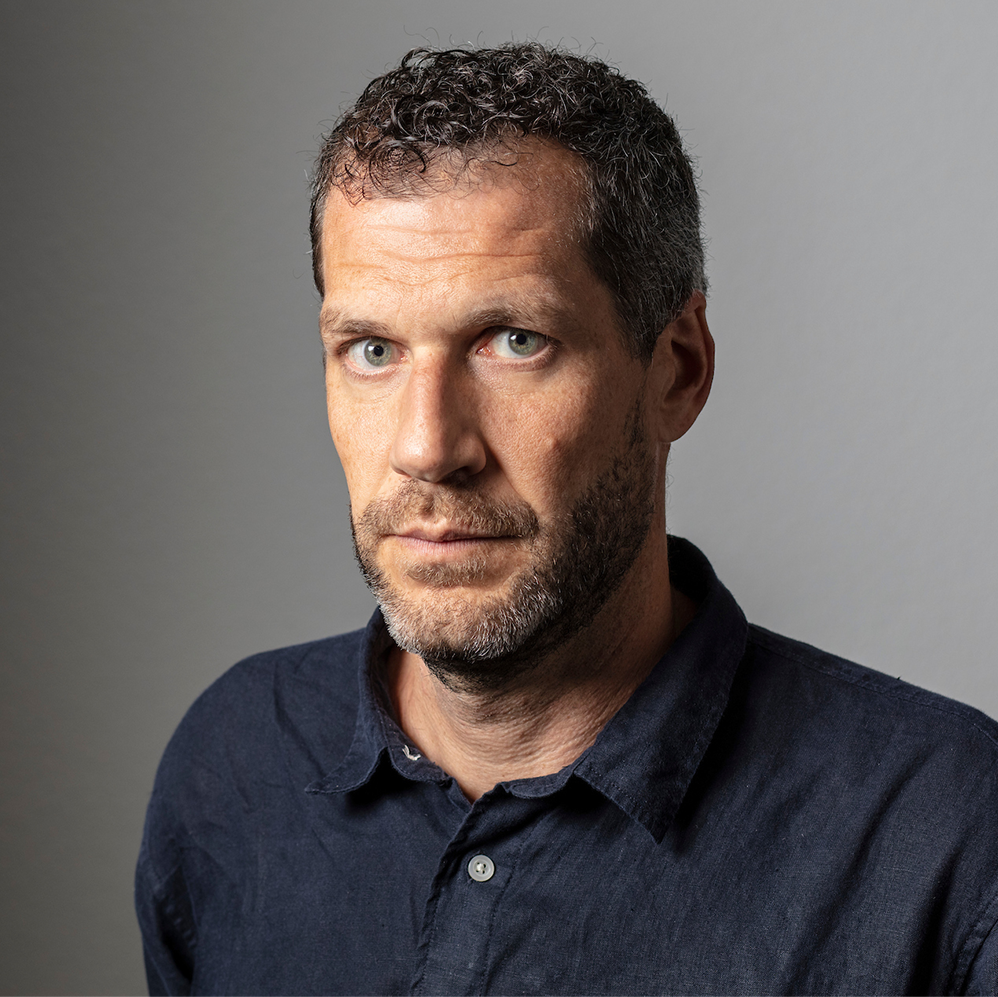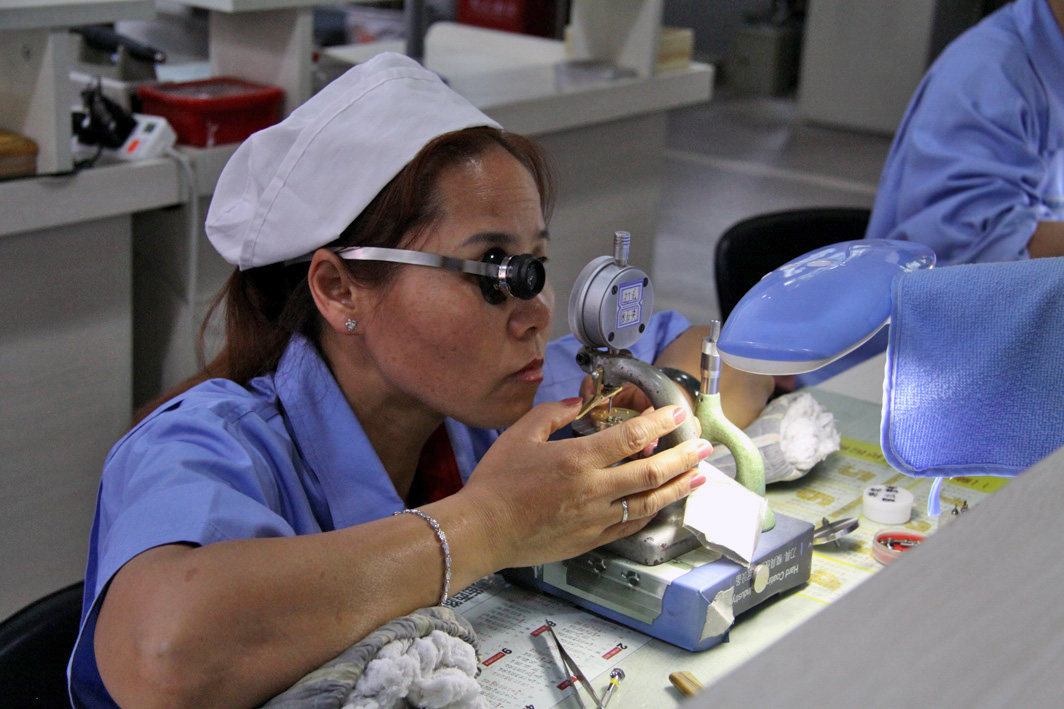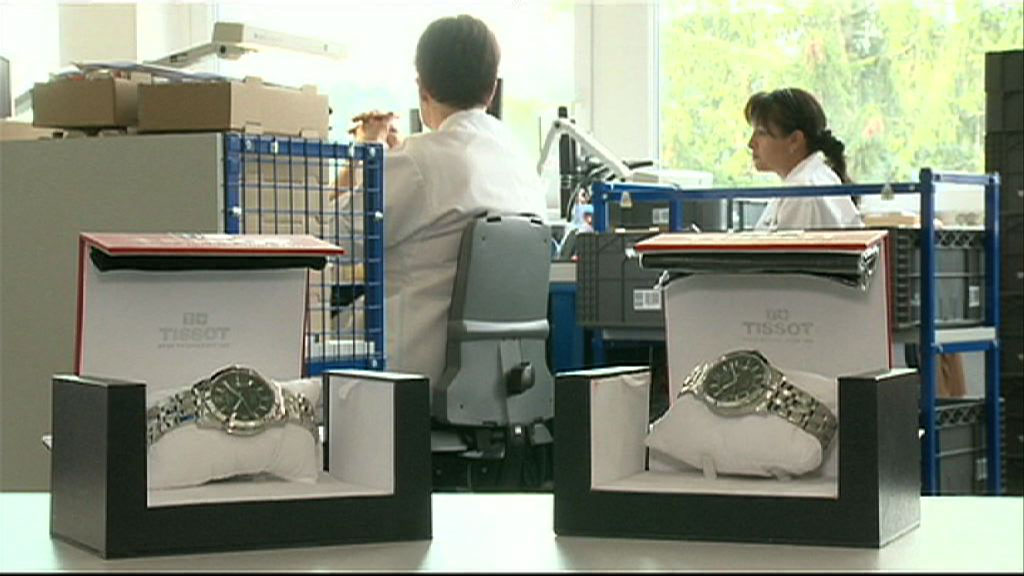Swiss crack down on fake watches from China

For the first time, fake Swiss watches of real technical sophistication are coming out of China. Sometimes sold at the same price as the originals, they result in lost earnings and harm the brand image of Swiss watchmaking.
If you look at it very, very closely, you can detect a few irregularities: a screw slot with a microscopic fault in it, a piece of the carbon casing replaced by plastic, or the absence of anti-glare glass.
But apart from these details, which even experts have trouble detecting at a glance, the fake Hublot Big Bang seized last December by Swiss customs is hard to tell apart from the original.
The look, the weight, even the smell – because like its model, the fake’s wristband was scented with vanilla – are deceptive. But the most telling factor resides in the core of the watch.
“That was one of the first times I’ve held in my hand a fake tourbillon watch, a real high-precision mechanism. The counterfeiters have now mastered ultra-complex movements,” says Michel Arnoux, head of the anti-counterfeiting unit of the Federation of the Swiss Watch Industry, at his office in Biel.
At the foot of the Jura, in this industrial city of 50,000 inhabitants where Swatch Group, the world’s largest watchmaking concern, has its headquarters, the investigators study – and worry about – the evolution of the Chinese counterfeit market, which is now hitting the high-precision watchmaking sector hard.
Money from online betting
In contrast to the Rolex sold for less than SFr100 ($104) on Asian and South American markets, these fake watches sold at several thousand francs apiece often to unwitting consumers – considerable forgone earnings for the brands involved.
Industry executives willing to go on the record about this highly touchy subject do not make light of their concerns.
“Counterfeiting costs the watchmaking industry billions each year,” Nick Hayek, head of Swatch Group, recently told the 20 Minuten newspaper. “The worst thing about it is that these copies are being made more and more professionally.”
The counterfeiters’ interest is certainly aroused by the current boom in luxury watches, but not only that.
“Following the crisis in the watch industry in 2008-2009, Chinese makers of highly complicated movements had to drop their prices to get rid of their stocks,” explains Michel Arnoux. “At the same time, the Chinese triads were looking for new outlets to invest the colossal sums they garnered from online sports betting.”
Second-hand products
While a direct link between organised crime and counterfeit watchmaking is hard to establish, it is clear to Swiss investigators that the two are associated.
“The counterfeiters are well organised and sometimes know the market better than the brand-name firms. They choose watches which sell best in the countries concerned, and quickly adjust to demand,” says Arnaux.
To distribute their products, the counterfeiters now mainly use internet buy-and-sell platforms like e-Bay. “When the crisis hit, many financial traders in New York or London sold off their watches on the Internet. The counterfeiters were able to jump into the breach, pretending that they were selling goods second-hand,” adds Arnoux.
Loss of trust
While no one admits it openly, there are whispers in Swiss watchmaking circles that the “inflated” prices of some brands and the policy of restrictive supply may have encouraged counterfeiting.
Also, by drastically reducing their sales network on the traditional markets, the Swiss brands have forced hundreds of jewellers to source supplies at second-hand. “This parallel market, which is perfectly legal in the EU and the USA, has been a real magnet for the counterfeiters,” Arnoux notes.
The charismatic CEO of Hublot, Jean-Claude Biver, has talked several times in recent years about the pride he felt when his watches were copied for the first time, proving the international status acquired by his brand. But now such talk is rarely heard.
For the harm done goes beyond just direct economic losses, as Arnoux points out: “If the consumer can no longer tell the difference between the real watch and a fake, he loses trust. This is a considerable blow to the brand image of Swiss watchmaking.”
Taking action on the ground
To curb the counterfeit phenomenon, the industry federation now has a team of 40 to 50 Chinese inspectors in the field. “Our strategy involves mounting a lot of operations so as to keep those producers under constant pressure.” These joint operations with the police are a daily occurrence in the province of Guangdong, which is the epicentre of counterfeit watchmaking.
The results can be “pretty slight”, admits Arnoux. “Everything is spread out – there is no official economic link between the different players. Sometimes the components have been manufactured in a completely legal way by bona fide companies, then assembled and engraved in secret workshops.”
While smaller fry regularly get caught in the net, as in an operation in March that yielded a haul of 280,000 prefinished items in a secret workshop, it is much more difficult to find the trail leading to the brains behind the organisation. Involved in all kinds of other criminal activities, they may in fact enjoy the protection of the authorities.
Swiss watchmakers are hoping that their concerns will be passed on by Economics Minister Johann Schneider-Ammann when he goes to China on a trade mission from July 8 to 15.
“Matters of intellectual property are right at the top of the memorandum we addressed to Mr Schneider-Ammann,” says Arnoux.
Counterfeiting is estimated to make up 5-10% of world trade. For the Organisation for Economic Co-operation and Development, the volume of exchanges of counterfeit consumer products is more than the GDP of 150 countries, with a total world value of $250 billion in 2007.
88% of counterfeit goods seized in the European Union in 2010 originated from China and Hong Kong.
According to EU data, the most frequently counterfeited products are textiles (30%) and shoes (13%). Watches (11%) come in third, just before medicines (8%), mobile telephones (7%), leather goods (7%), electronic goods (5%) and cosmetics (5%).
In Switzerland, a consumer who knowingly buys a counterfeit product for personal use has to pay for its destruction plus administrative costs, which may amount to several hundred francs. No fine as such is imposed.
On the other hand, anyone who acquires counterfeit goods for commercial use may face a prison sentence of up to five years.
According to the Federation of the Swiss Watch Industry, 40 million fake watches are produced every year in the world – more than the number of real Swiss watches (30 million).
The turnover of Swiss watch counterfeiters amounts to about SFr1 billion, which is about 5% of the turnover of the entire industry.
In 2010, nearly 1300 raids were carried out in Asia leading to the seizure of 500,000 watches. Significant seizure hauls were also recorded in Mexico, Brazil and Italy. 320,000 auctions on the internet were shut down.
Contacted by swissinfo.ch, the embassy of China in Bern says it has “been made aware of the concern expressed in the Swiss press as regards manufacture and sale of counterfeit watches in China.” It confirms that the two countries have a “common interest” in the matter, the strengthening of intellectual property rights being an “important basis for the development of a modern country”. Beijing affirms its “determination to improve the standards of intellectual property and to fight crime against” that principle.
The embassy admits that the country has tackled the problem “fairly late”. It claims however that “progress is apparent”. It points out that a Swiss-Chinese working group set up in 2007 has met five times so far, contributing to the strengthening of the “relationship of trust and collaboration between the two countries”.
(Translated from French by Terence MacNamee)

In compliance with the JTI standards
More: SWI swissinfo.ch certified by the Journalism Trust Initiative



You can find an overview of ongoing debates with our journalists here. Please join us!
If you want to start a conversation about a topic raised in this article or want to report factual errors, email us at english@swissinfo.ch.